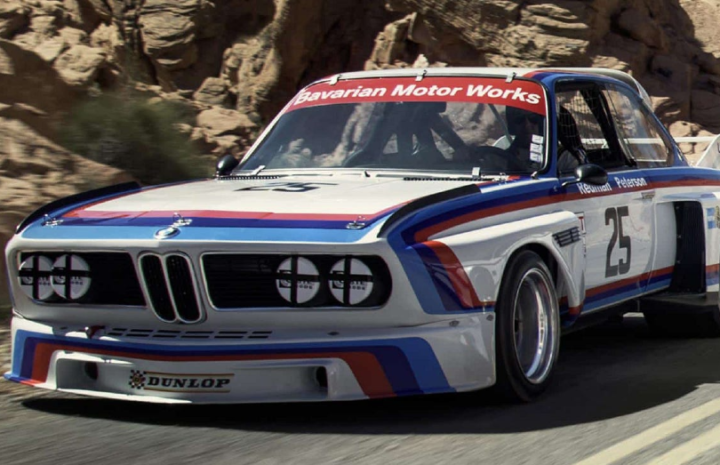The BMW M badge signifies a sportier version of a regular passenger ride, but how does it stand out, and what is its history? Let’s find out.
The “M” was an easy choice for BMW; it stands for “motorsport” and is one of the most easily recognizable badges in the entire automotive industry. The use of this single letter is all we need to see to know that the vehicle attached to that badge is sporty, fast, impressive, and fun. Let’s explore the history of this badge and its colors to give you something fun to tell your buddies the next time you see them.
Are the colors as obvious as the letter?
The first color should be pretty obvious; bavarian blue makes perfect sense. The name BMW literally stands for Bavarian Motor Works or in German Bayerische Motoren Werke Aktiengesellschaft. With that out of the way, let’s explore where the M badge colors come from. We’ve covered the blue, but how did the red and violet get added to the mix? Here’s the story.
Collaboration brought the colors together
The BMW M Division came together in 1972 as a collaborative effort between Jochen Neepash, race director and co-managing director of BMW Motorsport GmbH, Wolfgang Seehaus, BMW interior designer, and Manfred Rennen, BMW exterior designer. At the time of its founding, the official name was still BMW Motorsport GmbH. Eventually, the name changed to BMW M GmbH, but this change didn’t take place until 1993.
This new division was supposed to combine BMW’s racing activities under a single, unified corporate identity. This meant creating a color scheme that would become recognizable throughout the entire automotive industry. The designer of this logo was headed by Seehaus, and he is credited with coming up with the blue, violet, and red scheme.
As much as you might want a long and complicated explanation of the colors, it was quite simple:
“Bule stands for BMW, red for motorsport, and violet for the unique combination of the two.”
Could the red be part of a sponsorship program?
During the creation of the BMW M badge color creation, the brand was still sponsored by Texaco, which uses bright red as part of its color scheme. Although negotiations with Texaco broke down at the end of 1972, it was easy to see the Texaco influence in the car designs coming out of the motorsport division at BMW.
The Texaco connection to the colors is nothing more than a rumor. There aren’t any historical documents in BMW’s archives to support this theory. BMW was involved in many racing events with the sport of Castrol, which uses green in the logo, but nothing about the BMW M badge shows the company was trying to win Castrol over.
The tri-color scheme goes racing
The incredibly striking tri-color logo and paint scheme debuted in 1973 on the BMW 3.0 CSL, which would quickly become a BMW racing icon. Some think the color scheme was chosen because all three colors would show well in black and white photos, but BMW still holds to its simplicity and combination to signify a unified effort for their racing division.
A bit of trivia for your friends would be to ask them, “Which came first, the color scheme or the M logo?” The answer would be the color scheme, which appeared in 1973, while the M wasn’t used until 1978 with the launch of the BMW M1. This was the first car developed and launched entirely in-house by the BMW M GmbH team. Since that time, the M and the tri-color logo have been united to be one of the most highly recognizable logos in the automotive world.
The logo of power has changed over the years
The M with three stripes leaning against it has been a symbol of speed and driving dynamics since 1978. This version of the logo was created by Giorgio Giugiaro, and it became known as the “Giugiaro M.”
The stripes have changed a little over the years. Eventually, a dark blue stripe replaced the violet stripe. The latest change took place in March 2020 with the new logo featuring stripes colored in light blue, dark blue, and red while the “M” is white.
The BMW M badge is easily one of the most significant movements in creating corporate identification and recognition. Today, we know the BMW M to be the logo on some of the top performance versions of the BMW cars that are tuned and improved at the BMW M Division. Incidentally, the M Division has only developed one vehicle in-house since the M1, and that is the XM SUV.
This post may contain affiliate links. Meaning a commission is given should you decide to make a purchase through these links, at no cost to you. All products shown are researched and tested to give an accurate review for you.

